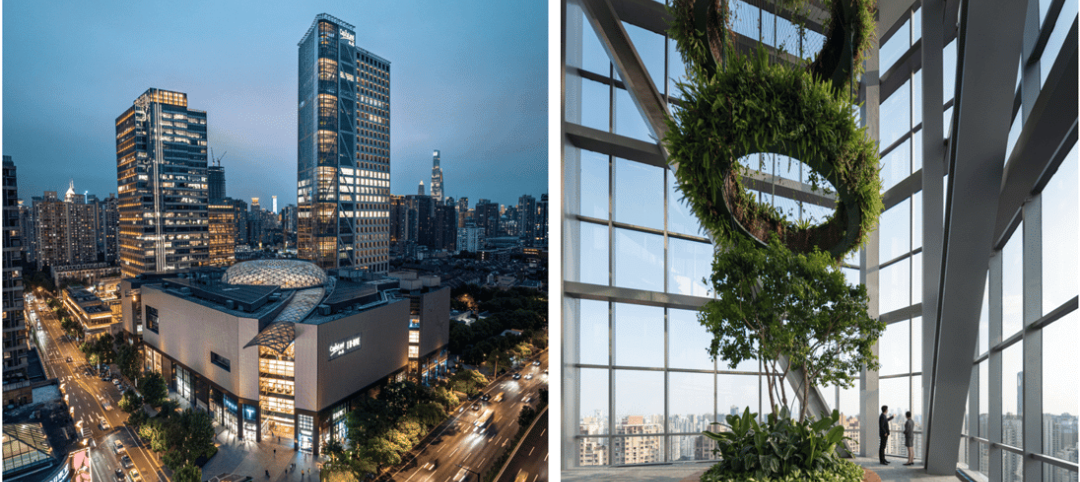When Seattle’s King Street Station opened its doors in 1906, it stood as a bold symbol of the city’s newfound prominence as the region’s primary shipping port—a position the Emerald City holds to this day.
Designed by architects Charles A. Reed (1858-1911) and Allen H. Stem (1856-1931), most noted for their work on New York’s Grand Central Terminal, King Street Station was the centerpiece of a massive enterprise that shifted the city’s main rail lines from the waterfront to the central business district, thanks to the construction of a 5,245-foot tunnel beneath the city. The L-shaped, 62,400-sf terminus quickly became the busiest train station in the Northwest, earning it the nickname “Gateway to the West.”
The Italianate depot features a distinctive, 242-foot-tall clock tower, the second-tallest such structure on the West Coast; it was modeled after the Campanile di San Marco in Venice. At the time of its completion, the station was the tallest structure in Seattle. Inside, bright-white plaster and marble decorated the walls and ceiling of the waiting areas.
The depot was placed on the National Register of Historic Places in 1973, but by that time it had lost much of its grandeur. Poorly conceived modernizations in the ’40s, ’50s, and ’60s led to the removal of large sections of the plaster and marble walls and glass mosaic tile accents. The magnificent plaster ceiling was covered with acoustical tiles. The roof was crumbling. The staircase on Jackson Street was boarded up. The four tower clocks were right only twice a day.
PLATINUM AWARD WINNER
King Street Station
SeattleBuilding Team
Submitting firm: ZGF Architects (architect)
Owner: Seattle Department of Transportation
Structural/MEP engineer: Arup
Construction manager: Shiels Obletz Johnsen
General contractor: Sellen ConstructionGeneral Information
Construction time: Sept. 2009 to April 2013
Size: 62,400 sf
Delivery method: CM at risk
Cost: $55 million
The demise of train travel in the mid-20th century, coupled with a falloff in funding for maintenance, saw the station fall even further into a state of disrepair. Most urgently in need of shoring up were the unreinforced masonry walls—inspections showed that the structure was in no shape to withstand a major seismic event.
As rail ridership began to pick up in the 2000s, the city of Seattle decided it was time to upgrade and restore its landmark rail station. In February 2008, the city purchased the building from the Burlington Northern Railway Company for $10 and then went about rounding up the $55 million needed for a complete rehab and modernization (60% of funding came from federal sources; the balance was split between state and local sources).
The project scope encompassed full seismic retrofit and structural upgrade work, rehabilitation of the clock tower, full MEP/FP upgrades, and repair and restoration of the 45-foot-high ornamental plaster ceilings and walls, the terrazzo and mosaic tile floors, and the operable windows—all while striving for LEED Platinum certification. Complicating matters was a requirement from the city that the station remain fully operational during the project—a goal the team achieved by dividing the work into multiple phases.
INSERTING A NEW STRUCTURE
Half the budget was allocated for the structural repair and seismic retrofit work—a tedious, meticulous process that involved inserting a new steel frame structure inside the existing masonry walls with surgical precision so as not to disturb the historical elements. The Building Team cut 35-foot-high slots into the brick perimeter and inserted steel columns and high-strength grout alongside the existing columns.
New shear walls were created for the 8,000-sf waiting room. Steel floor plates were added on levels two and three for additional strengthening. The 12-story clock tower was cross-braced; new columns were added on all four corners. A total 1,345 tons of steel was installed to support the interior spaces.

A system of geothermal wells was bored underneath the downtown plaza; it is designed to cover 100% of the 62,400-sf building’s heating and cooling needs. The clock tower rises 242 feet to its peak. ZGF Architects led the Building Team for the client, the Seattle Department of Transportation. Photo: Benjamin Benschneider Photography
While not as costly as the structural work, the rehabilitation of the historic interior elements was no less difficult. To replicate damaged and missing elements of the ornamental plaster walls and ceiling, matching molds were painstakingly created using the original ornate pieces and the same casting methods craftsmen employed more than a century ago. The molds were filled with casting plaster and inlaid with hemp and burlap during the casting process to create the final pieces. The castings were then stripped out of the molds, reinstalled, and attached to the structure.
The Building Team removed all of the sashes and trims from the original windows and refinished and reinstalled them using all remaining original glass. In all, the team restored 74 window openings and 199 sashes and replicated 15 window openings and 33 new sashes.
Significant care was taken to protect the floors during the structural steel installation and helical pile drilling. Areas of the marble inlaid terrazzo floors were catalogued, removed, and reinstalled after the new buried structure was installed. Where the original tile flooring was missing, the team repurposed existing pieces of marble to replicate the floor elements.
In honoring King Street Station with a Platinum Award, the Reconstruction Awards jury commended the Building Team on its technical precision in executing both heavy construction work—structural steel reinforcing and geothermal installation—and extremely delicate and often tedious historic restoration work—all while the station remained operational.
“The fact that they were able to execute all of this work while achieving LEED Platinum certification through features like geothermal makes the project even more impressive,” said judge Krista Gnatt, LEED AP, Preconstruction and Business Development Manager with Bulley & Andrews, Chicago.
Related Stories
Geothermal Technology | Jul 29, 2024
Rochester, Minn., plans extensive geothermal network
The city of Rochester, Minn., home of the famed Mayo Clinic, is going big on geothermal networks. The city is constructing Thermal Energy Networks (TENs) that consist of ambient pipe loops connecting multiple buildings and delivering thermal heating and cooling energy via water-source heat pumps.
High-rise Construction | Jul 29, 2024
Safdie Architects’ Shanghai office tower features glass-enclosed corner garden that ascends the 35-story structure
Safdie Architects has announced the completion of LuOne Mixed-Use Complex—a business, retail, and entertainment development in the Luwan district of Shanghai, China. The mixed-use complex consists of an eight-level retail galleria, which opened in 2018, and a 35-story office tower, which recently reached completion.
Casinos | Jul 26, 2024
New luxury resort casino will be regional draw for Shreveport, Louisiana area
Live! Casino & Hotel Louisiana, the first land-based casino in the Shreveport-Bossier market, recently topped off. The $270+ project will serve as a regional destination for world-class gaming, dining, entertainment, and hotel amenities.
Smart Buildings | Jul 25, 2024
A Swiss startup devises an intelligent photovoltaic façade that tracks and moves with the sun
Zurich Soft Robotics says Solskin can reduce building energy consumption by up to 80% while producing up to 40% more electricity than comparable façade systems.
Codes and Standards | Jul 25, 2024
GSA and DOE select technologies to evaluate for commercial building decarbonization
The General Services Administration and the U.S. Department of Energy have selected 17 innovative building technologies to evaluate in real-world settings throughout GSA’s real estate portfolio.
Great Solutions | Jul 23, 2024
41 Great Solutions for architects, engineers, and contractors
AI ChatBots, ambient computing, floating MRIs, low-carbon cement, sunshine on demand, next-generation top-down construction. These and 35 other innovations make up our 2024 Great Solutions Report, which highlights fresh ideas and innovations from leading architecture, engineering, and construction firms.
Senior Living Design | Jul 23, 2024
The growing importance of cultural representation in senior living communities
Perkins Eastman architect Mwanzaa Brown reflects on the ties between architecture, interior design, and the history and heritage of a senior living community’s population.
MFPRO+ News | Jul 22, 2024
Miami luxury condominium tower will have more than 50,000 sf of amenities
Continuum Club & Residences, a new 32-story luxury condominium tower in the coveted North Bay Village of Miami will feature more than 50,000 sf of indoor and outdoor amenities. The program includes a waterfront restaurant, dining terraces with resident privileges, and a private dining room outdoor pavilion.
Healthcare Facilities | Jul 22, 2024
5 healthcare building sector trends for 2024-2025
Interactive patient care systems and trauma-informed design are among two emerging trends in the U.S. healthcare building sector, according to BD+C's 2024 Healthcare Annual Report (free download; short registration required).
MFPRO+ News | Jul 22, 2024
6 multifamily WAFX 2024 Prize winners
Over 30 projects tackling global challenges such as climate change, public health, and social inequality have been named winners of the World Architecture Festival’s WAFX Awards.




















